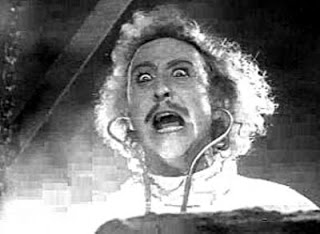Thursday, March 02, 2017 4:25:17 PM
just another shares for sale mill
Please enlighten us how a share structure has anything to do with a company achieving profitability? Does it matter if a company has 10 shares outstanding or 100? How does the cost of business and the profit from sales become affected by the share structure?????
FACT IS IT DOESN'T See any discussion of shares when determining profit below? Nope, didn't think so.
Profit is the money a business makes after accounting for all expenses. Regardless of whether the business is a couple of kids running a lemonade stand or a publicly traded multinational company, consistently earning profit is every company's goal. As a result, much of business performance is based on profitability in its various forms. Some analysts are interested in top-line profitability, whereas others are interested in profitability before expenses, such as taxes and interest, and still others are only concerned with profitability after all expenses have been paid.
There are three major types of profit that analysts analyze: gross profit, operating profit and net profit. Each type of profit gives the analyst more information about the company's performance, especially when compared against other time periods and industry competitors. All three levels of profitability can be found on the income statement.
Gross, Operating and Net Profit
The first level of profitably is gross profit. Gross profit is sales minus the cost of goods sold. Sales is the first line item on the income statement and the cost of goods sold, also referred to as CGS, is generally listed just below it. For example, if company A has $100,000 in sales and a CGS of $60,000, it means the gross profit is $100,000 minus $60,000, which is $40,000. Divide gross profit by sales for the gross profit margin, which is $40,000 divided by $100,000, or 40%.
The second level of profitability is operating profit. Operating profit is calculated by deducting operating expenses from gross profit. Gross profit looks at profitability after direct expenses, and operating profit looks at profitability after operating expenses. These are things like salaries, general and administrative costs, also referred to as SG&A. If company A has $20,000 in operating expenses, the operating profit is $40,000 minus $20,000, equaling $20,000. Divide operating profit by sales for the operating profit margin, which is 20%.
The third level of profitably is net profit. Net profit is the income left over after all expenses, includes taxes and interest, have been paid. If interest is $5,000 and taxes are another $5,000, net profit is calculated by deducting both of these from operating profit. In this example the answer is $20,000 minus $5,000, minus $5,000, which equals $10,000. Divide net profit by sales for net profit margin, which is 10%.
Read more: Profit Definition | Investopedia http://www.investopedia.com/terms/p/profit.asp#ixzz4aCp3293V
Follow us: Investopedia on Facebook
FEATURED DaBaby and Stunna 4 Vegas's "NO DRIBBLE" Joins Music Licensing, Inc.'s Portfolio • Jun 7, 2024 10:15 AM
Mushrooms Inc. (OTC: MSRM) Announces Significant Share Buy Back by the Board Director and New Strategic Initiatives. • MSRM • Jun 5, 2024 1:32 PM
Hydromer Announces Launch of HydroThrombX Medical Device Coating Technology • HYDI • Jun 5, 2024 10:24 AM
Dr. Michael Dent Finances $1 Million to Drive HealthLynked's Healthcare Transformation • HLYK • Jun 5, 2024 8:00 AM
Avant Technologies Enters Binding LOI to Purchase Dozens of High-Performance, Immersible, AI-Powered Servers • AVAI • Jun 5, 2024 8:00 AM
IQST - iQSTEL Announces $290 Million 2024 Annual Revenue Forecast • IQST • Jun 4, 2024 1:43 PM










